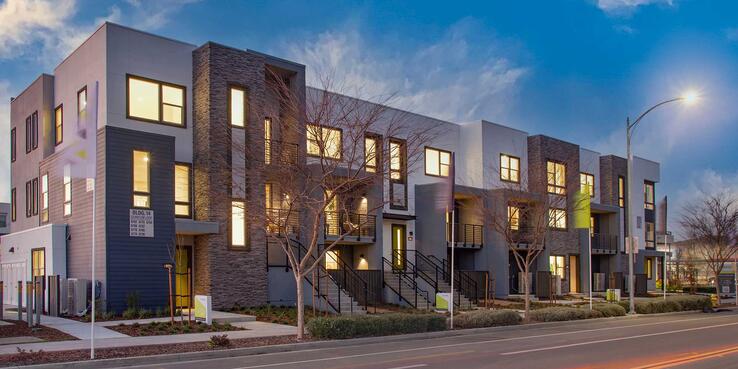Only about 3,000 condominiums are built each year in California. In fact, multifamily condos made up just 3 percent of the new housing the state added between 2011 and 2021, compared to 38 percent in Canada. Why?
The Financial Impacts of Construction Defect Liability on Housing Development in California, a new report commissioned by the Terner Center for Housing Innovation at UC Berkeley and SPUR, identifies a direct consequence of our state’s construction defect liability laws: the high cost of insurance for condominium builders. The report, prepared by Economic & Planning Systems (EPS), finds that developers pay three to four times as much for insurance for condominiums as they do for similar rental apartments and notes that these higher costs also come with significantly less insurance coverage: around half as much coverage as would be typical for a similar rental project.
This research was made possible in part by a generous grant from the Land Economics Foundation affiliated with Lambda Alpha International (LAI) and builds on a LAI Global Initiatives Committee webinar and research paper from 2023 titled Home Ownership in Transition: A Canada-California Comparison and the Terner Center’s 2024 report Construction Defect Liability in California: How Reform Could Increase Affordable Homeownership Opportunities.
Developers and building contractors in California face higher financial risk due to litigation from post-construction defect claims and high insurance costs. As a result, developers simply choose to build multifamily rental projects instead of for-sale projects that could create more affordable homeownership opportunities.
Senate Bill 800 and the “Right to Repair”
Passed in 2002, Senate Bill 800 (Burton) was designed to allow developers to remedy building defects prior to litigation, but the pre-litigation process does not work in practice. Frequently, the builders are given insufficient time to return and make repairs, are not told what the defects are, and are unable to agree on a plan with the homeowner. In many cases, the homeowner rejects the builder’s repairs altogether.
As a result, litigation is common, and home owners’ associations can effectively sue developers for construction defects prior to allowing the developer to make repairs. Under current law, developers are liable for defects in their condominium development up to 10 years following construction. Most of the interviewees for the EPS report agreed that the current rules governing construction defect liability have not been particularly effective at either reducing claims or protecting consumers. Many pointed to litigation attorneys’ desire for large settlements as a force that drives law firms to speculatively seek out problems even if none exist, rather than focus on cases where homeowners have valid and substantiated claims.
Now, more than two decades after passage of SB 800, we have ample evidence that the ”right to repair” law is not working as intended, and condominium production has plummeted in California.
New State Legislative Attempts at Reform
In 2024, Senator Steve Glazer introduced Senate Bill 1470, which would have created a true pre-litigation right to repair to resolve condominium construction defect claims. The legislation did not preclude litigation; it simply said that the right to repair should be granted before litigation. SPUR provided technical assistance and research resources to Senator Glazer and his staff. Unfortunately, that legislation was strongly opposed by the Consumer Attorneys of California and did not move forward. Included in the review of potential reforms in the EPS report are warranty systems that cover construction defects in the Canadian provinces of British Columbia, Alberta, and Ontario and the state of New Jersey. These systems focus on delivering any needed repairs rather than costly litigation and expensive settlement payouts. Over the past two years, SPUR has been reviewing these alternatives to construction defect litigation and speaking with subject matter experts. We are also currently studying recent construction defect reforms adopted by the state of Colorado.
SPUR continues to push forward on this issue. We are researching alternative models to repair construction defects and the use of deposits as a source of financing for condominium construction, and we will continue to advocate for reforms in Sacramento that will increase affordable homeownership opportunities in our state.
